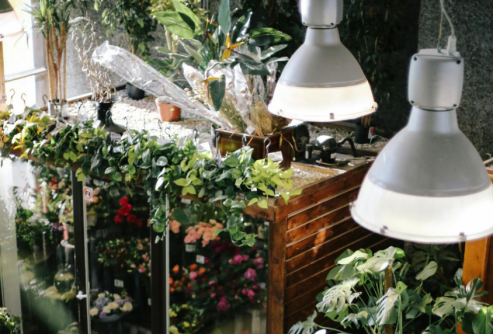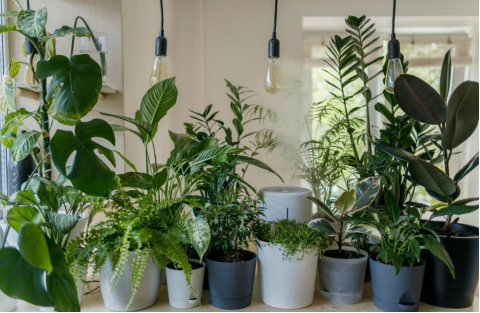In the world of indoor farming and horticulture, grow lights have become a crucial tool in ensuring the optimal development of plants. One of the most important factors in the effectiveness of grow lights is the light spectrum they emit. The term “light recipe” refers to the specific combination of wavelengths in the light spectrum that are tailored to support various stages of plant growth. Understanding how different light spectrums affect plant development is key to maximizing growth, yield, and overall plant health.

The Basics of Light Spectrum and Photosynthesis
The light spectrum refers to the range of electromagnetic wavelengths that are visible to the human eye, as well as some wavelengths that are invisible, such as ultraviolet (UV) and infrared (IR) light. For plants, light plays a critical role in photosynthesis, the process by which plants convert light energy into chemical energy to fuel their growth. Different wavelengths within the light spectrum influence various aspects of plant development, from root growth to flowering.

When using grow lights, it’s important to provide the correct light spectrum to support photosynthesis and promote healthy growth. For example, red and blue wavelengths are most effective for photosynthesis, but other wavelengths such as ultraviolet can also influence how plants grow and develop. By carefully selecting a grow light with a tailored light spectrum, growers can optimize plant development at every stage.
The Role of Different Light Wavelengths of on Plant Growth
Blue light((400-500 nanometers on the light spectrum, plays a significant role in the early stages of plant growth, helping establish a strong root system. Blue light improves absorption of chlorophyll, which is responsible for synthesizing proteins and amino acids. When plants are exposed to blue light from grow lights, they tend to grow more compact and develop stronger stems and leaves. This is especially beneficial for leafy greens like lettuce and spinach, as it promotes dense, healthy foliage.
Red light, which ranges from 600-700 nanometers on the light spectrum, is important in the flowering and fruiting stages of plant development. Red light triggers photoperiodism, the process by which plants detect changes in day length to initiate flowering. For fruit-bearing plants such as tomatoes and peppers, red light from grow lights helps ensure that flowers form properly and fruit production is abundant.
While red and blue light are often the main focus of grow light recipes, far-red light, which is found just beyond the red region of the light spectrum (700-800 nanometers), also has a significant impact on plant development. Far-red light is less effective for photosynthesis but plays a key role in regulating plant height and elongation. When plants are exposed to far-red light, they tend to stretch and grow taller, which can be advantageous for certain crops or in situations where light competition occurs, such as in dense vertical farming systems.
Another often overlooked part of the light spectrum is ultraviolet (UV) light, particularly UV-A (315-400 nanometers). While UV light is not essential for photosynthesis, it can influence plant metabolism and defense mechanisms. Exposure to small amounts of UV light from grow lights can stimulate plants to produce secondary metabolites, such as flavonoids and terpenes, which enhance plant flavor, aroma, and pest resistance.

Full-Spectrum Grow Lights: A Balanced Approach
With advances in LED technology, many modern grow lights are designed to provide a full light spectrum, meaning they emit light across all the key wavelengths that plants need for optimal growth. Full-spectrum grow lights are particularly useful for growers who want a single solution that can support plants throughout their entire life cycle, from seedling to harvest. By offering a balance of blue, red, and far-red light, along with smaller amounts of UV and other wavelengths, full-spectrum grow lights ensure that plants receive everything they need to thrive.
The Case of Customized Light Recipe Application
Different plants have different light needs, and the ideal grow light recipe will vary depending on the species and the stage of growth. For example, leafy greens such as lettuce may benefit from a light spectrum rich in blue light to encourage vegetative growth, while flowering plants like orchids or cannabis may require more red and far-red light to promote blooming and fruit production.

Yunnan is one of China’s major provinces for flower cultivation, with numerous baby’s breath greenhouses. Sansi, as a professional plant lighting brand, provided specialized grow lights and system solutions for a 900㎡ baby’s breath cultivation base located in Kunming, Yunnan Province. Through a customized lighting plan, Sansi provided 190 full-spectrum LED grow lights, ensuring that the greenhouse received more than 15 hours of light per day. This extended lighting period made the spectrum and light intensity more targeted and practical, effectively ensuring consistent lighting for flower induction in the baby’s breath.